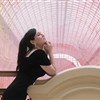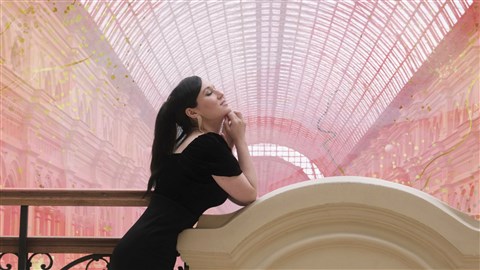Exploring the fusion of tradition and innovation in Chinese painting
My background in art history is rooted in the Western tradition, and I am eager to delve into traditional Chinese art, embarking on a journey into this unexplored realm.
Recently, I had the opportunity to visit Chinese artist Zhang Mingyu, which allowed me to gain insights into his approach to painting. Our discussion provided a clearer understanding of the distinctions between Chinese and Western art, the influence of culture and nature on an artist's work, and the challenges of developing a unique style within a tradition that spans centuries.
Shot by Arina Yakupova, Jiang Xiaowei. Edited by Arina Yakupova. Subtitles by Wang Xinzhou.
Zhang elucidated that Chinese and Western painting are founded on distinct principles. In Western art, color is the primary medium for representing objects, whereas Chinese ink painting primarily utilizes ink and water.
"This divergence is deeply rooted in cultural backgrounds," he explained. "In the West, people tend to be more extroverted, which is mirrored in the bold, vibrant colors they employ. In contrast, China, with its emphasis on introspection, favors lighter, more nuanced shades." Nature also significantly influences these styles. Zhang highlighted the misty landscapes and subdued colors of southern China. "In regions like the Yangtze River area, the scenery is inherently suited to ink painting. The soft, hazy hills and understated tones encourage an emphasis on simplicity and elegance."
Zhang's journey into painting began in his childhood, with his grandfather's friendship with Pu Hua, a renowned Shanghai-style painter. "I recall my father would display the paintings during holidays for our admiration, then meticulously store them away," Zhang reminisced. "That environment left an indelible impression on me, so when I began painting, I was naturally drawn to similar styles."
As an adult, Zhang's artistic perspective evolved when he relocated to Tianshui in northwest China. The expansive, rugged landscapes of the Loess Plateau and the Qinling Mountains contrasted sharply with the softer landscapes of southern China. This shift prompted him to experiment with new techniques. "I attempted to merge the bold, solid strokes characteristic of Northern painting with the softer, more fluid style of the South," he said. "It was not straightforward, but eventually, I found a way to harmonize the two."
For Zhang, painting is a continuous learning process. "I draw inspiration from the old masters, but I also spend considerable time observing nature," he stated. "Both are indispensable. Ink painting has a lengthy history, but it's not merely about replicating the past–it's about uncovering new insights within that tradition."
Visiting Zhang's studio provided me with a deeper comprehension of how art is influenced by our surroundings. His approach to painting integrates tradition with innovation, demonstrating how personal experiences and the landscapes we inhabit shape our creative expressions.
















